Duration: 04:00
Project: Judaica
Song: Shishelai
Practitioner: Nazlıhan Eda Erçin, Agnieszka Mendel
Director: Nazlıhan Eda Erçin
Videography: Ben Spatz
Date: 2 June 2017
Venue: Centre for Psychophysical Performance Research
Source File: J064
COMMENTARY
Eda
This is one of the videos which captures a moment on the edge, a moment that emerges out of creative and personal urgency. That is a moment where the lead practitioner creates a genuine action based on bodily rhythm and gesture as a response to her partner’s singing. The original task offered by the lead practitioner in the beginning of the work does not involve any explicit engagement with bodily rhythm. I, as the lead practitioner, am teaching my partner, Agnieszka, a song in Turkish language, ‘Shishelai’ / Şişeler which is originally a folk song from Kilis, a south-eastern town in Turkey, neighboring Syria. However, it is mostly sang in a popular form in commercial entertainment contexts such as taverna or wedding. First, I am introducing to her the melody and then the words. The task is to repeat and sing in response to each other. The song clearly represents different worlds of associations, desires and resistances for each of us. My main question is: ’What it is that I am missing in this song?’ I listen to Agnieszka sing; how she breathes in, when she gives a pause, the volume of her voice and her pronunciation of the words. I am mapping the ways she relates to this unknown song in my presence. I am trying to relate to it from a different (non-popular) angle through her singing. There are glimpses of joy, curiosity and hesitancy in her voice. She courageously builds a genuine attitude in her signing by using unexpected intonations and expansions between syllabus. In response to her interpretation, I stop signing along and just listen to her for a while. Her way of working with the song invokes a rhythmic response in me which blurs the initial task of the exercise. I am urged to correspond in rhythm. I just move without ambition. I hit the left side of my upper body, the space between my breast and shoulder with my right hand. It resembles the gesture of thanking someone nonverbally by gently putting your hand on your heart (in a way how some performers bow in curtain call). Simultaneously, I beat the upper part of my left leg, right above my knee, with my left hand. This one resonates with the gesture of ‘beating the knee’ as a form of mourning which itself is a phrase in Turkish language: dizini dövmek. I keep doing this until my upper knee and palm are burning. This action encapsulates something personal, cultural and material which is incited by Agnieszka’s signing of this particular song. Throughout the video excerpt, we witness how I find, lose and re-find the action through numerous repetitions in relation to the vocal and associative interventions of my partner. It consequently leaves a mark on my skin, an area of diffused dark bruises which function as a tangible reminder of this work for about two weeks.
Ben
The need that Eda describes above is palpable, sensible, in the video. I didn’t have words for it before reading what she wrote, but the word ‘mourning’ strikes me as deeply resonant with the quality of this beating action. She finds in this moment a way of cycling between the regular pounding of the rhythmic beats and a flowing gesture that is so open and released it feels like a kind of dive. In the first part of the video she is immersed in the searching. It is clear that she wants to enter the song, to thread herself into it. She is looking for the right moments in the cycle, the gaps where she can enter. Beginning around 03:00, she finds this entry point and dives into it. Agnieszka senses this and continues to repeat a single fragment of the song, supporting Eda’s physical response. Later we try to find a title for the video. The word impulse comes quickly, but what are the impulses doing? I propose ‘threading’ as a way to visualize the care with which Eda has found a way of weaving her physicality into the substance of the repeating song. Reading her comments above, I understand a bit more about the need she felt to do this and the sources of the power that allowed this moment to occur.
Agnieszka
I remember Eda telling us, during one of our first focused trio conversations, how important for her is the issue of rhythm. She actually mentioned it at least a few times: once when we were discussing the custody of the songs and referring what were the factors which made us choose particular songs, second when we were deciding what configurations of the three roles and what elements we should bring to the studio. She mentioned rhythm. In the second situation – rhythm and ecstasy. I also remember that I got very exited because at that very moment I understood that we create a very complementary work team. Rhythm has always been a deficient component in my practise and understanding of music. I sensed that I can absorb a lot from a person who intuitively embodies rhythm in singing and hungers for meeting rhythm in the laboratory space. But this moment surprised me, because the initial context of this session was different. It was the first round of having a ‘proper singing’ time, when Eda was to teach me her song. But because she completed the task efficiently and fast the stream of work curved to other direction. I myself was just trying to track, within my body, the somatic paths of this new exotic song, trace its internal route, whether it perhaps unlocks some undiscovered passages for the voice. I think this may happen when you encounter different tradition – of singing, training and approaching voice. Indeed, what I have already noticed, Eda sings with her entire body. And what we often hear as slogan without coverage (‘root your voice in the body’ — ok, but what does that mean?) here in the work space becomes an embodied performance and I can clearly observe it. And try to follow.
Surprising was this point when she got silent and allowed her body to follow my singing. After a while the relation of my voice and her body became less defined, I felt we were both leading and following each other.
It was very different to what I experienced in the other session, when my role was to be a director and practitoner at the same time, in space with Ben as a practitioner but with his song leading; I asked him to choreograph my body into a dance lead by the dynamics of his song.


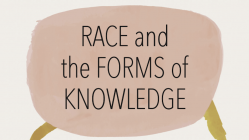
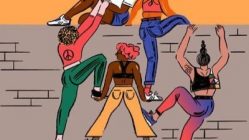
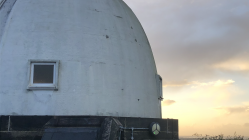
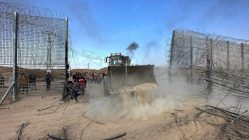
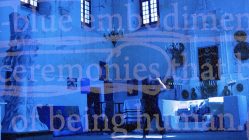
[…] June 2017 threading impulses into the song back to back […]